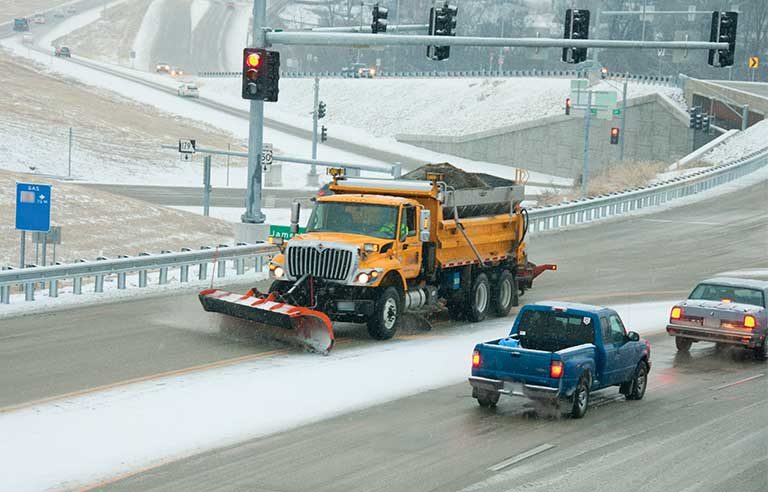Sharing the road with snowplows
Advice for safe driving

When snowy or icy conditions make driving difficult, we count on state and municipal snowplow crews to help make the roads safer. But all drivers need to do their part to share the road safely when snowplows are doing their work.
Chris Engelbrecht has seen the aftermath of vehicle-snowplow collisions during his 20-plus-year career at the Missouri Department of Transportation, and says the situation can “go bad pretty quickly.”
Engelbrecht, who is the emergency management liaison for MoDOT, said crashes often occur when drivers follow plows too closely, don’t anticipate them turning or try to pass them.
Driving tips
If conditions are snowy or icy, ask yourself, “Do I really need to go out?” If it’s necessary that you drive, buckle up, don’t use your cellphone and make sure your car is in good condition – especially the tires, headlights and windshield wipers.
When you’re on the road, give snowplows and their drivers plenty of room to do their jobs. Engelbrecht said snowplows often travel below posted speed limits for one obvious reason: potentially treacherous conditions.
The general guideline when following a plow is to put at least five to 10 car lengths between your vehicle and the plow – leaving more room as your speed increases. This helps in a number of ways, including aiding visibility. Plows often create large clouds of snow when they’re clearing the road.
Snowplow drivers don’t have an ideal field of vision, so “you might see them, but they don’t always see you,” the Indiana Department of Transportation cautions.
“These are very large vehicles (operating) in very poor conditions, and it’s difficult to see out of them on bright, sunny days,” Engelbrecht said.
Have you ever driven behind a plow that’s offloading salt, sand or other melting agents? Those materials can damage the windshield or front end of your vehicle if you’re following too closely. That’s especially true if a snowplow is discharging sand, notes Tom Peters, maintenance research and training engineer at the Minnesota Department of Transportation’s Office of Maintenance.
A slower driving speed helps keep the melting agents being spread from blowing or scattering off the roadway, he added.
Peters said MnDOT standards call for plows to drive no faster than 25 mph when spreading materials. But plows sometimes stop or change lanes to get around obstacles, such as a stranded vehicle, and you’ll have less time to react if you’re following too closely.
Post a comment to this article
Safety+Health welcomes comments that promote respectful dialogue. Please stay on topic. Comments that contain personal attacks, profanity or abusive language – or those aggressively promoting products or services – will be removed. We reserve the right to determine which comments violate our comment policy. (Anonymous comments are welcome; merely skip the “name” field in the comment box. An email address is required but will not be included with your comment.)
